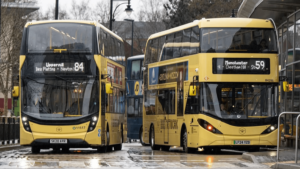The motor-industry must improve the accuracy of onboard predictions of how far vehicles can travel in order to encourage electric vehicle (EV) uptake, according to research conducted by Spark EV Technology.
According to the software company, on-board estimations of the range provided by a single charge can be more than 100% inaccurate.
Based on this, researchers at Spark EV Technology spoke to thousands of UK motorists who currently drive petrol or diesel vehicles.
The study revealed that around two thirds (64%) of UK motorists believe that having accurate and reliable information about how far they could travel before they needed to re-charge was an essential factor when choosing an electric vehicle.
51% of those surveyed also said that concerns around the range of EVs was one of the key reasons why they haven’t yet made the switch to electric.
Based on these findings, Spark EV technology is encouraging motor companies to improve their accuracy. Machine learning and AI technology can be used to do this by analysing data parameters on, as well as off the vehicle, such as the weather and traffic conditions, in order to provide highly accurate range predictions which are bespoke to the vehicle and the driver.
Justin Ott, CEO and founder of Spark EV Technology, said: ‘We have carried out extensive real-world trials around the globe for our automotive clients and the results were hardly surprising to our team.
‘Many EVs today use limited parameters based on short-term historic data on the vehicle to predict the range available for the next journey. However, in reality, there are many variables it must take into account off the vehicle — such as the weather and traffic conditions, before even considering the driving style of the person behind the wheel.
‘On numerous occasions during the trials, the on-board range predictions from the vehicle was more than 100 per cent inaccurate. It was not uncommon for the EV to use more than double the amount of battery power than was predicted by the on-board display, and sometimes during the live tests, our automotive customers would end a journey with more range available than at the start.
‘With range and charging anxiety a concern for so many motorists, the time has come for the industry to reassure motorists that electric vehicles, in the very near future, will provide highly accurate predictions about the available range remaining.’
Photo Credit – Pixabay

















These companies have strong distribution networks at the global level, and they invest heavily in R&D to develop new products.
I agree! Most EV Manufacturers incurred losses due to sales reduction during the pandemic in the initial months. The sales recovered in the latter months as demand for zero emission vehicles surged, however overall the companies suffered varying amount of losses.
Absolutely! A driver model is developed as well to control the vehicle’s speed and to represent human driver’s behaviour. In addition, a regenerative braking strategy
Absolutely! At this point it is difficult to reliably estimate the total job creation potential of electric vehicles. More electric vehicles, however, would also likely lead to some job losses in the oil industry.
Absolutely! Primarily based on these findings, Spark EV know how is encouraging motor firms to enhance their accuracy. Machine studying and AI know, how can be utilized to do that by analysing information parameters on
Absolutely! Despite problems with overcapacity and low profitability, the automotive industry retains strong influcence and importance.
In short, this is the approximate number of miles that a vehicle can travel in combined city and highway driving (using a mix of 55% highway and 45% city driving) before needing to be recharged, according to the EPA’s testing methodology.